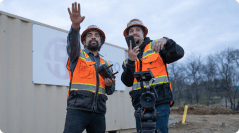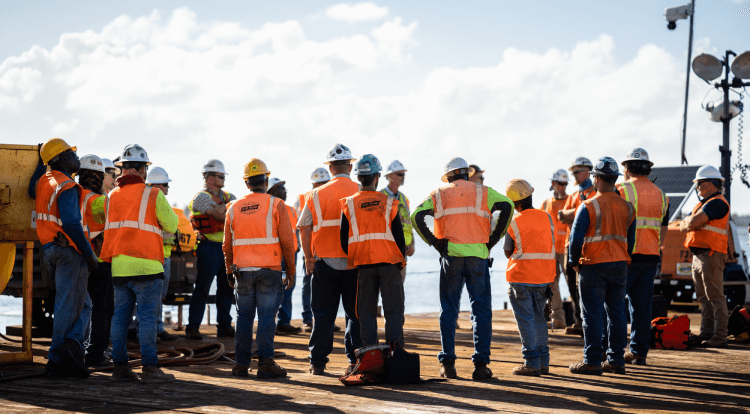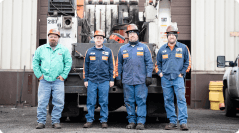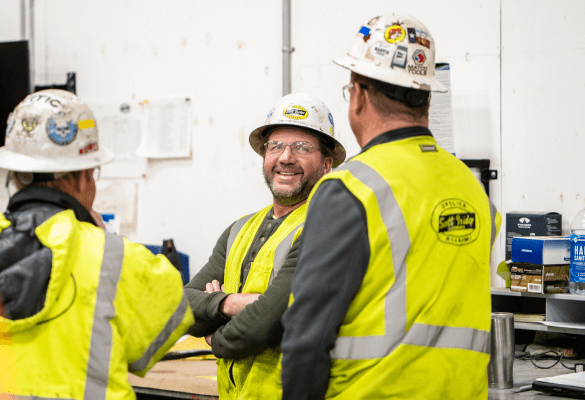Effective Geotechnical Consulting
Written by Mike Smith
January 26, 2023
Mike Smith (founder and Principal of SAECO) and Justin Thomas (geotechnical engineer at SAECO) discuss what's typical for a geotech firm when it comes to things like:
- How geotech engineers get started in the industry
- Geotechnical reports (also known as soil reports)
- How geotech engineers arrive at their recommendations
- When firms start making site visits
Hopefully, their conversation helps you better understand what effective geotechnical consulting looks like so you can recognize it—and just as important, recognize when a firm doesn't follow normal procedures.
Basic geotechnical services
Like most geotechnical consulting firms, the Smith and Annala Engineering Company (SAECO) of Arizona offers geotechnical engineering, construction QA and QC, and environmental services.
"We do that because a lot of our clients need all of those services on the same site," Mike explains.
If a firm doesn't offer all these services, you may have to hire additional firms to ensure you're covering all your geotech bases.
Geotechnical engineers
Most geotechnical engineers start as civil engineers.
"A lot of civil engineers, probably better than 75%, go into the design aspects of our industry. Those of us who get into the construction quality assurance, quality control, and geotechnical fields have a specialty. It usually takes a little bit more schooling," Mike explains.
He notes that everyone comes to the geotechnical engineering field a little differently, but when you compare his and Justin's stories, you can see some common threads.
Mike's engineering story
Like most geotech engineers, Mike has a four-year degree. He notes, "It took me five years, but I got a bachelor of science in civil engineering. Then I started out doing environmental consulting."The only problem was that he didn't like the environmental aspect of being a civil engineer.
One day, someone knocked on his door and said, "We could use a guy like you in our materials testing department. We just need you for the summer, and then you can go back to what you're doing."
Mike says, "I've always been the kind of person who's like, 'Okay, why not? I could learn some more.' That was the summer in 1995, and I'm still doing what I was supposed to do that summer. So my summer internship turned into a little bit more than that."
Justin's engineering story
Justin has a slightly different academic background than Mike.
"I took a geology class, and I was enamored with geology. My professor in that class said, 'If you want to go the geology route, that's great, but you need to add engineering to it because otherwise you're not going to make money,'"Justin says.
Taking his professor's advice, he went to the University of Alaska Fairbanks and earned a bachelor's degree in geological engineering. Just like Mike, his four-year degree took five years. "I think that's kind of typical for engineering," he notes.
After college, Justin and his wife moved back to Arizona. He quickly realized most job opportunities in the area were in construction QA, QC, and geotechnical fields, so he joined the geotechnical field.
According to Mike, geotech engineers make up about 10% or less of these fields, so Justin joined a very specialized, elite group of engineers. "I did that for about four years before I joined SAECO. It's been a good opportunity so far," Justin says.
Geotechnical reports
The usual outcome of geotechnical engineering is a geotechnical report, also called a soils report.
Every company has its own templates and formats that they use for those. Many larger national companies have tried to standardize those reports across the country.
"What we're attempting to show in that soils report is the collection of data from the drilling activities, lab testing, and any other findings we may have. Sometimes we may have other data because some part of the site may have had some other soils or earthwork activity on it," Mike says.
Within the soils report, the geotechnical engineer presents recommendations of what they feel the bearing capacities will be for that site. The design team can then make any necessary changes to ensure the structure is safe and stable.
Why buy geotechnical reports?
During a meeting with a client, the client's designer asked Justin, "Why are we spending so much money on a soils report nobody's ever going to see?"
That's one of the most common questions people ask geotech firms.
"They wonder why they're spending so much money on a geotechnical report or on the foundations. It doesn't make sense to them intuitively, but realistically if you don't get the information in that report, your building's not going to stand," Justin says.
That's why you need to invest in geotechnical reports at the beginning of your project—because while companies do use templates, geotech reports are not one size fits all.
Justin explains, "Geotechnical reports are custom for each and every site. You could literally have the exact same building, the exact same loads, the exact same structure on sites that are a mile apart, but the geotechnical report isn't the same for each of them because the soils under each building are different."
That's why engineers do the drilling, they make the recommendations they do, and why things can change. Each report is going to be custom.
What goes into geotechnical reports?
When geotechnical engineers go to the site, they drill and take samples to test in their laboratories. They make observations based on what they see. And they do a lot of research.
"We look at the history of the site, the seismic characteristics, and all of these different things. We're taking a holistic approach because so many different things can affect the recommendations that we are going to put into this report and give you as a client, contractor, or designer," Justin says.
In addition to recommendations, soils reports summarize the laboratory testing the geotechnical engineers did.
Often, the full report is included with the construction documents that contractors look at during the bidding process, so you can determine how much it will cost you to work with the soil on that site during construction.
A basic geotechnical report takes at least 12 to 24 hours to prepare, and that's just a small report. Larger projects take even longer.
Site visits
Geotechnical engineers may go to the site to scope out the potential conditions, estimate what services the client needs to ensure safe construction, and create a quote. "In an ideal world, we would love to visit every single site before we put out a scope and a quote, but that doesn't happen every single time," notes Justin.
Sometimes, geotechnical firms use information from the client and similar sites they've worked on in the past to estimate the scope and provide a quote.
Other times, a structural engineer or architect determines what they believe to be the scope. They also look at ways to reduce construction costs and below-ground work risks. Then, they send that scope to multiple geotechnical firms for pricing. This way, the client can compare quotes easily, because they all focus on the same services.
Justin says, "Once a project becomes our project, a site visit is going to be the number one priority. We want to make sure we are out there looking at the entire big picture before we do anything and that we're talking with the client."
Communication is key with the client. Geotech engineers need to know what the client is doing, what they're designing, and what they're going to do with that project so the engineer can adequately scope the drilling and make good recommendations.














